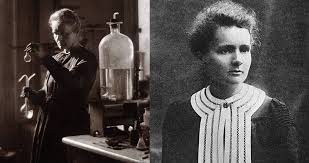An Interview with Dr. Dejan (Dan) Jovanovic, CTO – Part 1
Tell us about your experiences with AR and computer vision, high-performance computing, advanced electronics, applied physics, and mathematics.
How exactly have these experiences informed the vision and expertise you bring to Plnar?
Truth be told, the vision I bring for Plnar was informed just as much by luck as it was by my prior experience. I had gotten back from a 5 year expat stint in Europe and Asia when I was approached with the idea of making smartphone photographs fully measurable.
At first, the idea was to use laser accessories to provide depth and scale in photos. I did some work with semiconductor laser and photonic crystal simulation while at Los Alamos so that dovetailed with the early prototype. However, it became clear that to really make an impact in the market, we would need to ditch expensive accessories and move to a more commodity based approach.
At the time, smartphone-based augmented reality (AR) was just coming on the scene and the state-of-the-art was marker-based AR. We explored this space and discovered that we could design a custom AR marker that would achieve both camera pose accuracy and scalability beyond what was presently available. We quickly kitted up a demo app to pitch the concept to the Austin investor community. This eventually got us into Austin’s Capital Factory, which was a great setting to incubate the idea and to develop a go-to-market strategy. The product eventually evolved into an app-cloud platform with the potential to build 3D models from smartphone pictures. This led to funding, which has all led to where we are now.
So to answer your question, it was a combination of my background, the connections I’ve made throughout my career, and a bit of luck that together produced Plnar’s technology stack as it exists today.
I understand that you’ve generated five patents – can you give us a little background on what they encompass?
The patents have built on each other over time. Much of Plnar’s early IP is built on our custom AR marker design. If you aren’t familiar, AR used to function with markers, which would leverage a specific geometric shape that devices would detect, use its reference coordinate points, and then map onto those references. We made our own custom version that worked with a still photograph, and the first couple of patents focused on that marker, its design elements, where it could be used, etc.
Another patent that we never productized used the marker to get the phone camera’s position while emitting a laser line, and creating a very cheap, easily accessible laser scanner. It’s a very cool application but never gained traction due difficulties getting the laser accessory into people’s hands. It was at this point that we re-focused on building a tech-stack that operated solely on a user’s smartphone and nothing else
The big breakthrough came in 2017 when Apple released ARKit (their proprietary AR SDK). We immediately saw its value and patented the entire AR flow for the Plnar app. This flow is what you see when using our app: you add points around the perimeter of the room, then you build the walls, then you add the ceiling, add doors and windows, create objects, etc. This flow creates a model of the space while simultaneously measuring it, which makes our app unique and powerful.
In May 2019, we were approved for a provisional patent that extends our AR patent to our ability to measure in any still photograph. This is truly getting to the core of what was originally envisioned when founding SmartPicture, because it allows virtually anyone to build a 3D model of a room just by taking photos. It feels like the rest of the smart device world is finally catching up and developing capabilities that make our original vision possible. We always knew we would get there, it was just a matter of timing.
Stay tuned for part two of our interview with Dan to learn more about where he finds inspiration for innovation and how he sees Plnar’s technology evolving in the future!



